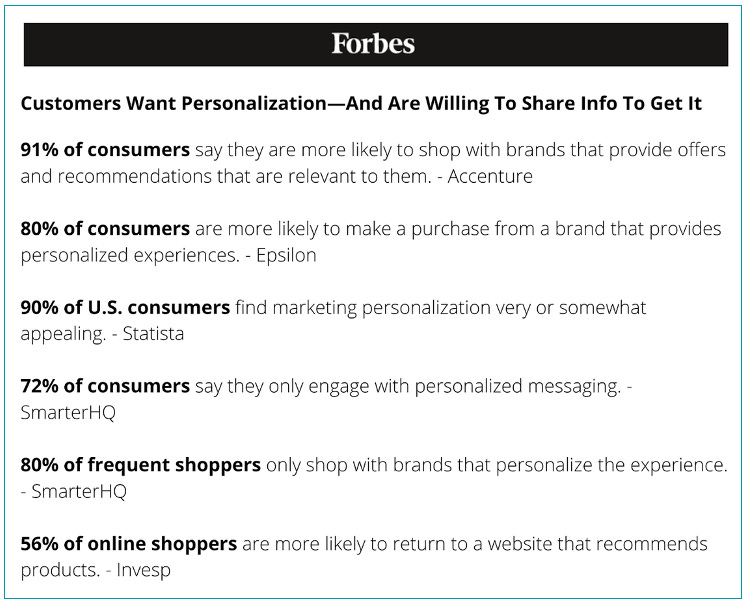Welcome to The Merchant Life, for retailers and retail enthusiasts wanting the insider perspective of all things retail.
- Endless aisles, staffing challenges, and unanswered product questions…
- Today’s consumer experience is frustrating.
- And brands and retailers are feeling the pain.
Today’s pain points in shopping, physical or digital, all come down to one thing.
The customer shopping experience is directly impacted by the existence of people; product knowledge experts to help guide customers in the right direction.
The paradox of choice is no longer just an interesting book. In fact, according to The Decision Lab, many psychologists have found that people with fewer choices are more likely to make a purchase. And do so with a higher degree of satisfaction with their decision.
With an abundance of choices today, finding the right product can be truly overwhelming.
And, in some cases, very disappointing.
Let’s dive in.
Personalizing Product Selection
In Partnership with Conversity
According to a survey by Capgemini, 64% of brick-and-mortar retail customers indicated a lack of guidance and knowledge offered by store staff as one of their top five customer experience pain points.
The overstocked shop floor, the never-ending e-commerce scroll, the perpetual product pushes on social…it can be unbearable. As more and more competitors and product offerings hit the market, the pain of developing buying confidence is only growing.
Online endless aisles can cause confusion and exhaustion. It’s difficult to differentiate one product from another, identify the features or benefits that could help consumers make the right choice and no human with enough product knowledge to help.
And unfortunately for those looking to maximize margins, price ultimately becomes the differentiating factor in making the sale.
If there is a sale at all.
With the increased difficulty in finding the right brand ambassadors or retail staff, many customers leave online and offline stores unhappy and empty-handed.
Even with the right frontline staff, unlabelled products or those with the wrong pricing tags are another big irritation for customers, leading to unnecessary price-checking queries, eating away at stores’ efficiency, their productivity, and their service. Time spent searching for the right price rather than truly engaging with the customer could result in loss sales as well as retaining great brand ambassadors.
According to Forbes, “Deloitte estimates the industry is in critical need of at least one million more workers this year. But then as quickly as new employees are added, others quit.”
If the industry doesn’t have enough retail workers, let alone frontline store staff, how can brands and retailers expect customers to gain any depth of product knowledge to build their buying confidence and guide shopping decisions?
- Do we have enough staff on the ground?
- Is there signage to help customers choose the right product? How are we communicating product information??
- Are seasonal drops and limited product ranges clearly identified?
As consumers, we know it’s more than likely we overbuy and return what doesn’t fit OR we just walk away.
According to the National Retail Federation (NRF), the rate of return would average 16.6% of total U.S. retail sales…more than $761 billion in merchandise ranging from auto parts to apparel to home products.
“Retailers must rethink returns as a key part of their business strategy,” said Steve Prebble, CEO of Appriss Retail.
Rethinking the product journey and adding returns as part of doing business is one thing.
But at such a high rate, it may not be worth it to put the products on the shelves or on the website in the first place.
Processing returns cost A LOT → the question is, how do we flip the script and focus on how we can reduce the rate of return?
The Script…Flipped
🛍️ What if we can give customer’s the deepest product knowledge and as a result, close the sale?
🛍️ What if we can capture customer product feedback and insights during the selling process?
🛍️ What if we can truly connect with the customer AND help them through their shopping journey?
A trusted and deeper connection with the customer could completely change the game.
Customers would be less overwhelmed with a personalized shopping experience and assistance on demand. Better understanding a customer’s needs, their mindset, and answering their questions could fuel the most optimal product recommendations both online and in-store.
Determining the customer’s motivation to purchase, mindset, and budget would provide a more personalized product selection journey that could minimize the chance of return while increasing customer satisfaction and loyalty.

Attracting and delighting customers is critical in today’s retail landscape.
As retailers innovate and deliver a personalized shopping experience, they will, in turn, deepen their customer connection, remove friction while shopping – it’s exactly what the customer wants and what the retailer needs.
From reducing the rates of returns to the ability to feature seasonal product directives, customers would benefit and retailers would win.
Assisted selling is not new, but it is a necessity in staying relevant in today’s hyper-competitive marketplace.
It’s a whole new game!
Customer data is crucial in making smarter decisions and insights through data will help retailers learn about their shoppers in real-time.
Imagine having the ability to build deeper relationships with customers while informing product and marketing decisions – from assortment optimization to merchandising strategy to customized promotions.
To truly give the customer the right product at the right time and in the right place.
- Customer insights will drive better product decisions, giving brands a clearer idea of what the customer wants and what they don’t want.
- Customer insights will remove the guesswork in assortment planning and merchants can better predict evolving shopping behaviors.
- Customer insights will help retailers and brands customize and hyper-localize product promotions, catering to what the customer is looking for without being intrusive.
Gathering insights through data and asking the right questions can remove much of the guesswork when planning the right product mix.
Telling us what they like, what delights, and most importantly, what we are missing from a product mix.
Product planning and merchandise assortment decisions that are driven by insights will make retailers relevant.
Sales will increase, conversion will go up, and returns will reduce. It’s unquestionable that assisted selling and support teams on the shop floor with product knowledge and comparison tools is critical.
The Customer Connection
Gathering insights through data and asking the right questions can remove much of the guesswork when planning the right product mix.
Telling us what they like, what delights, and most importantly, what we are missing from a product mix.
Product planning and merchandise assortment decisions that are driven by insights will make retailers relevant.
Sales will increase, conversion will go up, and returns will reduce. It’s unquestionable that assisted selling and support teams on the shop floor with product knowledge and comparison tools is critical.
The secret sauce is the customer connection.
The million dollar question…how do we do this today, in a market where labor is lacking and product knowledge experts may be difficult to retain?
Here are five ways to consider and connect you with your customer:
Enable the right tools.
Focus on the things that matter.
Stay connected with your customer.
Chain Store Age Exclusive with Liza Amlani
I recently spoke with Dan Berthiaume of Chain Store Age on the importance of retail innovation and technology.
We started our conversation with a “What If?” thought experiment…
What if we took the concept to market calendar and activated digitization from source to shelf?
From your traditional concept to market calendar:
To enabling technology and streamlining processes throughout calendar activities:
The result = speed to market, efficiencies across the organization and simplification of work.
A few takeaways from the article:
🗞️ From collaboration and transparency to the importance of retailers meeting customer needs, technology is the common thread and getting digital is critical.
🗞️ Retail technology like Aptos Retail‘s merchandising and planning tools to Conversity and SimpliField helping brand ambassadors on shop floors or Talkdesk‘s future of the contact center…simplification and digitization will help brands and retailers get faster to market.
🗞️ Aligning with sourcing partners, breaking down silos and barriers, AND getting closer to the customer is the future of retail and technology will be the catalyst.
Find the full read here: Chain Store Age











